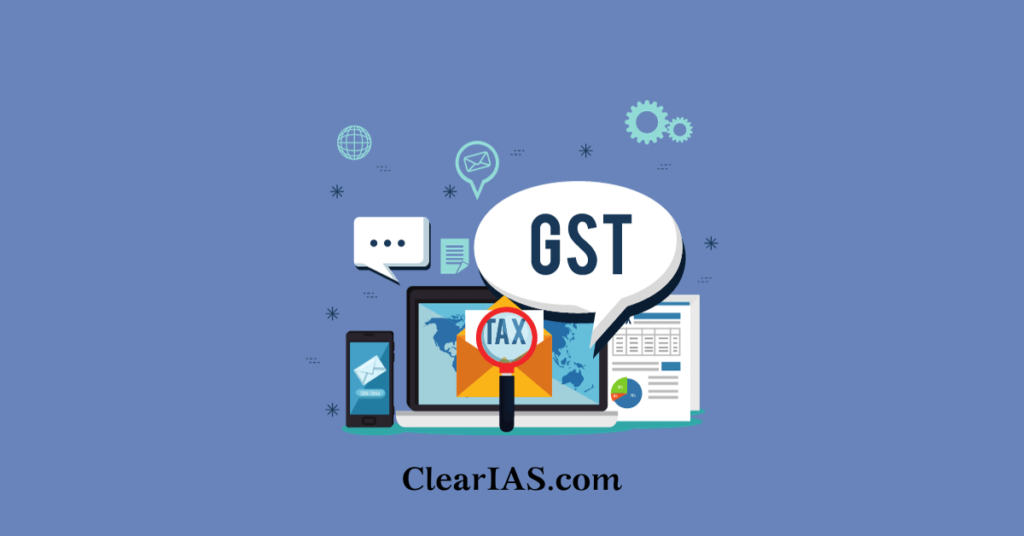
Recognized as a monumental tax overhaul in the nation, the Goods and Services Tax (GST) consolidates various indirect taxes previously administered by both the Central and State governments, including excise, VAT, and service tax. It applies to the sale of both goods and services within the country.
Every reform inevitably brings forth its own set of merits and demerits. In this discussion, we will delve into the positive aspects of GST first:
Advantages of GST
· GST stops the tax from piling up or repeating.
GST serves as an all-encompassing indirect tax aimed at consolidating various forms of indirect taxation. Significantly, its primary goal is to do away with the cascading impact of taxation observed in the past. The cascading tax effect can be succinctly defined as ‘Tax on Tax.’
· Increased limit for mandatory registration
In the former VAT structure, businesses were obligated to pay VAT if their turnover surpassed Rs. 5 lakhs (with variations across states). Notably, this threshold differed on a state-by-state basis. Moreover, service tax did not apply to service providers reporting turnovers below Rs. 10 lakhs.
However, with the implementation of the GST system, this threshold has been elevated to Rs. 20 lakhs, offering an exemption to many small-scale traders and service providers.
· Arrangement for Simplified Tax Compliance for Small Businesses
Under the GST system, small businesses, having an annual turnover between Rs. 20 to 75 lakhs, can take advantage of the Composition scheme, allowing them to lower their tax obligations. This initiative has successfully alleviated the tax burden and compliance requirements for many small enterprises.
· Effortless and user-friendly online process.
The GST process, covering everything from registration to filing returns, is conveniently conducted online, ensuring a hassle-free experience. This proves particularly beneficial for startups, sparing them the challenges of obtaining separate registrations such as VAT, excise, and service tax.
· There are fewer compliance requirements.
Previously, there were separate returns and compliance requirements for VAT and service tax. However, with the introduction of GST, the number of returns has decreased. There are about 11 returns under GST, with 4 basic returns applicable to all regular taxable entities. The primary return, GSTR-1, is submitted to document the list of sales invoices and related documents for the tax period.
Subsequent returns include GSTR-2A and GSTR-2B, featuring dynamic and static auto-drafted information on input tax credit availability during the tax period. The summary return, GSTR-3B, encompasses both sales and input tax credit details, refund information, and non-GST supplies for the tax period. It serves the purpose of reporting taxes payable, claimed input tax credit, and taxes paid during the tax period.
- E-commerce operators receive distinctive consideration under the GST framework.
In the pre-GST era, the e-commerce sector faced ambiguity in rules, with varying VAT laws for goods supplied through online platforms. To illustrate, in Uttar Pradesh, online platforms like Flipkart and Amazon had to submit a VAT declaration and provide the delivery truck’s registration number, with the risk of goods being confiscated in the absence of proper documentation.
Furthermore, certain states, including Kerala, Rajasthan, and West Bengal, classified these e-commerce platforms as facilitators or intermediaries, exempting them from VAT registration. The disparate treatments and intricate compliance procedures prevailing at that time have been streamlined and eliminated with the implementation of GST.
Under the GST regime, a unified set of regulations has been established for the e-commerce sector nationwide. This marks the first instance where common provisions are applicable across India, eliminating complications related to the inter-state movement of goods.
- Enhanced logistics efficiency.
The previous logistics scenario in India necessitated the maintenance of numerous warehouses across states to circumvent the Central Sales Tax and state entry taxes during inter-state transportation. This often led to underutilized warehouses, contributing to escalated operational expenses.
However, the advent of GST has alleviated these restrictions on the movement of goods between states. Consequently, there is a growing inclination among warehouse operators and e-commerce aggregators to establish their warehouses strategically, favoring locations like Nagpur, recognized as India’s zero-mile city, over establishing warehouses in every city along their delivery route.
The reduction in unnecessary logistics costs is already contributing to increased profits for businesses engaged in the transportation and supply of goods.
- GST brings regulation to the unorganized sector.
In the era preceding GST, industries like construction and textiles in India often functioned without significant oversight or organization.
However, the advent of GST has ushered in a new phase, incorporating provisions for online compliance procedures and payments. Furthermore, access to input credit is now contingent upon the supplier’s acceptance of the amount. These alterations have introduced a level of accountability and regulation into these sectors.
Disadvantages of GST
- Elevated expenditure resulting from the acquisition of software.
Staying abreast of GST updates is imperative for businesses. It is essential to guarantee that accounting or ERP software remains current with real-time GST legal and portal modifications. Alternatively, businesses can opt for a GST compliance solution to maintain uninterrupted compliance. However, both choices necessitate a financial investment and require time for employee training to ensure proficient utilization of the new GST software.
For instance, Clear offers an out-of-the-box, high-quality GST solution – ClearGST software. This software, powered by AI, ensures compliance with the latest GST laws and regulations. It includes features such as AI-driven reconciliations, insightful reports, end-to-end GST return filing, automated Table-4 reporting in GSTR-3B, and much more!
- Failure to comply with GST regulations may result in penalties.
Many small businesses in India are adapting GST changes with every passing month. When the law was first introduced, they had learned to issue GST-complaint invoices, be compliant with digital record-keeping, and of course, file timely returns. This means that the GST-complaint invoice issued should have had mandatory details such as GSTIN, place of supply, HSN codes, and others.
- The implementation of GST led to an increase in operational costs.
GST revolutionized the process of tax payments and return filings, requiring businesses to engage tax professionals with expertise in maintaining GST compliance. This resulted in a gradual escalation of costs for small businesses, as they had to shoulder the added burden of hiring specialized professionals. Additionally, businesses had to invest in training their employees for GST compliance, further contributing to their overhead expenses. The adoption of plug-and-play, Software as a Service (SaaS) solutions like ClearGST offered taxpayers an avenue to achieve compliance at a reasonable cost.
- GST was implemented during the fiscal year.
Upon its initiation on July 1, 2017, GST was initially applied during the last three months (April, May, and June) of the financial year 2017-18, with businesses adhering to the old tax structure for the preceding period. The transition to the GST regime posed challenges for businesses, leading some to operate both tax systems concurrently. This parallel approach gave rise to confusion and compliance issues.
- Embracing a fully digitalized taxation system.
In contrast to the past, businesses had to transition from traditional pen-and-paper invoicing and filing systems to online processes for return filing and payments. This shift posed challenges for some smaller businesses in adapting to the new digitalized framework.
The procedure for GST return filing is user-friendly. Business owners are only required to upload their invoices using the easy-import options, and the software automatically populates the return forms with information from the invoices, ensuring an error-free end-to-end filing process. Real-time identification of errors in invoices by the software enhances efficiency and timeliness.
- Small and Medium Enterprises (SMEs) bear a greater tax burden.
Smaller businesses, particularly in the manufacturing sector, have encountered challenges under the GST regime. In the past, only businesses with a turnover surpassing Rs. 1.5 crore were liable to pay excise duty. However, under GST, any business with a turnover exceeding Rs. 20 lakh is obligated to pay GST.
Nevertheless, SMEs with turnovers up to Rs. 75 lakhs can opt for the composition scheme, where they only pay 1% tax on their turnover instead of GST, leading to reduced compliance requirements. The trade-off, however, is that businesses under this scheme forfeit the ability to claim any input tax credit. The dilemma of choosing between higher taxes or the composition scheme (with no input tax credit) remains a challenging decision for many SMEs.
Conclusion
Certainly, embracing change is always a formidable task. The government is actively working to streamline the transition to GST. Learning from global economies that implemented GST ahead of us, and surmounted initial challenges, is crucial. These economies have reaped the benefits of a unified tax system and seamless input credits.
GST has evolved significantly over the years, incorporating technologies like AI and ML in data analytics. These measures have effectively addressed revenue leakages, facilitating the auto-population of various returns with validated details to mitigate errors at the source.
